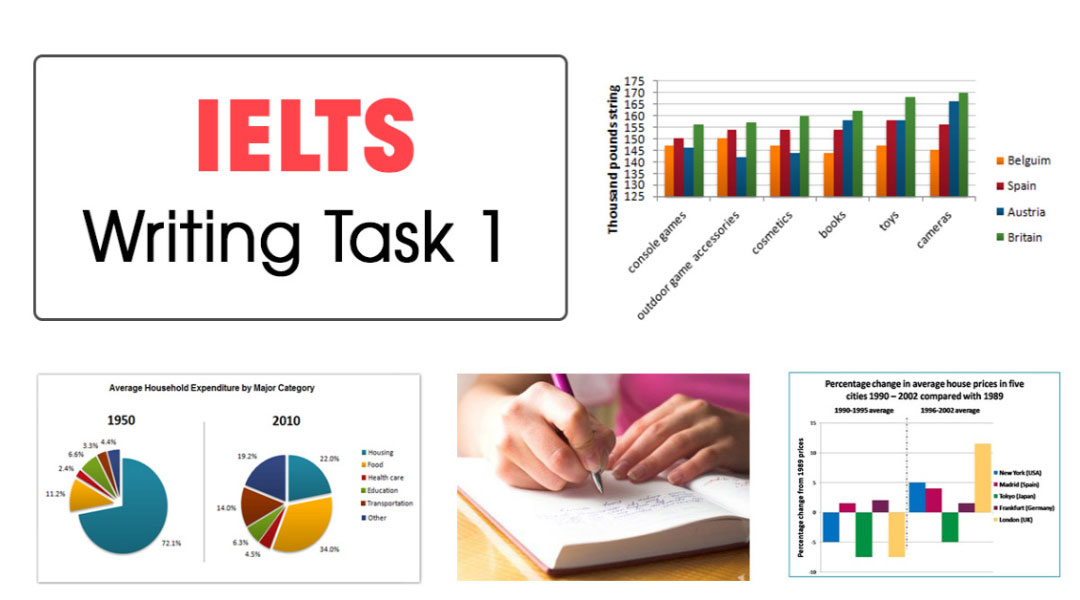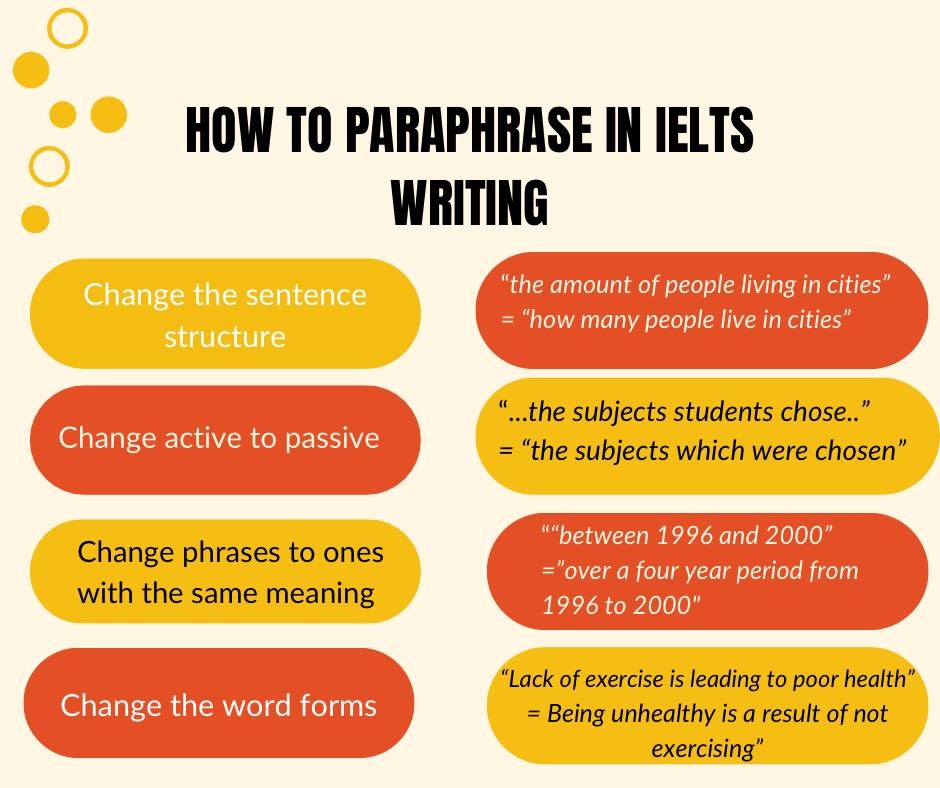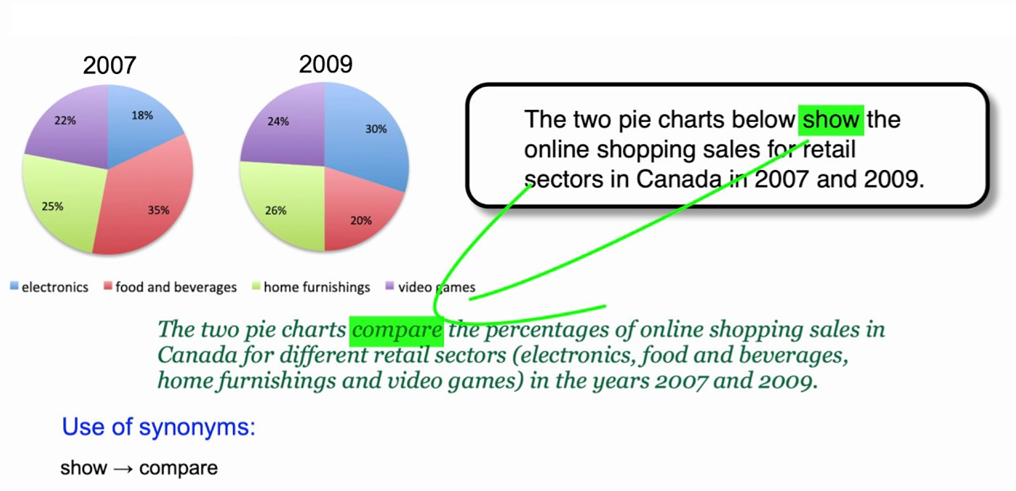How to Write a Strong IELTS Writing Introduction Task 1
Struggling to start IELTS Academic Task 1? Master your IELTS Writing introduction Task 1 in 3 simple steps. Discover how to paraphrase prompts flawlessly, craft high-scoring overviews, and avoid common traps – with real examples and tips.
Your IELTS Writing introduction Task 1 is the handshake that starts your response – make it confident and clear. In just 2-3 sentences, you show examiners you understand the task. In this guide, you’ll learn a straightforward 3-step method to compile such an effective Introduction and set the rest of your response up for success.
Why Your IELTS Writing Introduction Task 1 Matters?

Your introduction is like a handshake with the examiner – it creates that crucial first impression. When you start your IELTS Writing Task 1 response with a well-crafted introduction, you accomplish two essential things. First, you set clear context by rewriting the task in your own words and identifying key elements like the chart type (bar graph, table, etc.), what’s being measured (population, sales), the time period, and measurement units. This immediately shows the examiner you understand exactly what the visual data represents. According to official IELTS guidelines (ielts.org), this demonstration of task comprehension forms the foundation of your Task Achievement score – which counts for 25% of your total marks.
A good introduction does more than just show understanding – it actively launches your scoring potential. The overview sentence (your 1-2 line summary of main trends) simultaneously boosts two critical areas:
- Task Achievement: IELTS examiners specifically look for this overview to award higher bands (Band 7+ requires it according to ieltsliz.com).
- Coherence & Cohesion: This summary creates a roadmap for your entire response, making your analysis flow logically. As IELTS Advantage explains, it helps you systematically discuss trends in later paragraphs.
In order to maximize efficiency, dedicate 2-3 minutes during planning to craft this introduction-overview combination, ensuring you remain within the 20-minute task limit while setting up your entire response for success.
Step-by-step guide to Write IELTS Writing introduction Task 1
Step 1: Understand the Prompt
Begin by carefully analyzing the task before writing anything. This critical first step involves identifying four key elements from the prompt: the visual type (whether it’s a bar chart, line graph, table, map, or diagram), the main topic (what’s actually being measured – like energy consumption, population changes, or coffee production), the time period (specific years or general timeframe shown), and the units of measurement (percentages, dollars, tons, etc.). Taking 30 seconds to note these details prevents misunderstandings that could cost you marks later. For instance, confusing a bar chart showing comparisons with a line graph displaying trends would lead your entire response off track. Always double-check whether the data shows changes over time, comparisons between categories, or a step-by-step process.
Next, focus on avoiding direct copying from the prompt. Examiners immediately notice when candidates simply repeat the original wording, which suggests limited vocabulary. Instead, practice swapping words naturally while keeping the same meaning.
| Prompt | Paraphrase |
| “The chart shows…” | “The graph illustrates…” “Data from the table highlights…” “The table presents…” “The chart displays…” |
| “the number of…” | “The amount of…”
“The proportion of…” “The rate of…” |
| “production/sales/consumption of…” | “The output of…”
“The distribution of…” “The usage of…” |
This simple word substitution demonstrates your language flexibility and earns marks for lexical resource. Keep a mental list of alternative verbs like ‘depicts’, ‘demonstrates’, or ‘presents’ to vary your expressions.
Step 2: Paraphrase the Prompt (1 Sentence)

Now transform the prompt into one polished opening sentence that showcases your language skills. Effective paraphrasing requires you to rework the original statement while including three essential components: what is being shown (the main subject), when/where it applies (time period or location if specified), and how it’s measured (the units). Think of this as repackaging the information in your own academic voice. For example, if the prompt states “The chart shows coffee production in Brazil and Vietnam (2000–2020)”, you might restructure it to: “The bar chart compares coffee output in Brazil and Vietnam over two decades (2000–2020), measured in tonnes.”
This rewritten version maintains all key information but uses different vocabulary (“shows” → “compares”, “production” → “output”) and adds clarity about measurement units. Remember that successful paraphrasing isn’t about changing every single word – it’s about strategically replacing core terms while keeping the meaning identical. If you struggle with synonyms, focus first on altering the sentence structure (e.g., changing from active to passive voice) before substituting individual words.
Read more: 7 Powerful Ways to Paraphrase IELTS Writing Task 1
Step 3: Add a Clear Overview (1–2 Sentences)
 The overview is the most valuable sentence in your IELTS Writing introduction Task 1 – it summarizes the main trend or most significant pattern in just 1-2 lines. Start by identifying the “big story” in the data: What’s the most noticeable increase or decrease? Which categories show the strongest contrast? Focus on the forest, not the trees – this means stating general patterns like “car usage grew substantially” rather than specific figures like “from 20% to 50%”. Save detailed statistics for later paragraphs.
The overview is the most valuable sentence in your IELTS Writing introduction Task 1 – it summarizes the main trend or most significant pattern in just 1-2 lines. Start by identifying the “big story” in the data: What’s the most noticeable increase or decrease? Which categories show the strongest contrast? Focus on the forest, not the trees – this means stating general patterns like “car usage grew substantially” rather than specific figures like “from 20% to 50%”. Save detailed statistics for later paragraphs.
Use straightforward transition phrases to introduce your overview: “Overall,” “In general,” or “Broadly speaking” work perfectly. For instance, consider this effective overview: “Overall, Vietnam’s coffee production surged dramatically, while Brazil’s output remained stable.” Notice how it highlights both a major change (“surged dramatically”) and a key comparison (“while Brazil’s remained stable”) without numbers. This 12-word sentence immediately tells the examiner you’ve grasped the essential message, setting up your entire response for higher marks in both Task Achievement and Coherence. Practice spotting these big-picture trends within 10 seconds of looking at any visual data.
The Ideal IELTS Writing Task 1 Introduction Structure
- Sentence 1: Paraphrased task description
Begin with a rewritten version of the prompt that demonstrates your vocabulary range. This opening sentence establishes the foundation by identifying three key elements: the visual type (graph/chart/map), core subject (what’s being measured), and time/location scope. For example, if the prompt states: “The line graph shows electricity use in Australia (1995–2020)”, your paraphrased version might read: “The line graph depicts residential and commercial electricity consumption patterns across Australia over a 25-year period from 1995 to 2020.” Notice how “shows” becomes “depicts,” “electricity use” transforms into “consumption patterns,” and the timeframe is explicitly framed as “over a 25-year period.”

- Sentence 2 (optional): Units/time period/multiple visuals
Add this sentence only when dealing with complex measurements, multiple data types, or when units weren’t mentioned in your first sentence. This demonstrates attention to detail – a Band 7+ requirement. For instance: “Data is quantified in kilowatt-hours, with projections extending to 2030.” You’d include this clarification when:
- Units appear in the prompt but not in your opening sentence
- Multiple measurement systems exist (e.g., millions vs. percentages)
- Timeframes require extra explanation (e.g., “including projections”)
In simpler tasks like pie charts showing percentages, this sentence is often unnecessary.
- Sentence 3: Overall trend(s) or key feature(s)
This mandatory final sentence summarizes the most significant trend, contrast, or pattern in general terms. Using transition words like “Overall,” “Broadly,” or “In general,” focus on the big picture without statistics. For example: “Overall, residential demand demonstrated a steep upward trajectory compared to relatively stable commercial usage.” This overview accomplishes three critical goals: it satisfies the Task Achievement requirement for key features, creates coherence for your entire response, and showcases your analytical skills – all within 10-15 words. Remember: never include specific data (e.g., “from 15k to 45k kWh”) here – save those for body paragraphs.
Common Mistakes to Avoid

- Avoid copying prompt
Directly copying the task prompt into your introduction is a major red flag for IELTS examiners. It suggests you’re relying too heavily on memorized phrases and not demonstrating your ability to use your own words—something that’s crucial for achieving a high score in Lexical Resource, one of the key marking criteria. For instance, if the prompt says, “The graph displays tourism trends in Europe,” and your response begins with exactly the same sentence, it signals limited vocabulary and weak paraphrasing skills. Instead, aim to show your command of English by rewording phrases using synonyms and varied sentence structures. A better version might be: “The graph illustrates changes in the number of tourists visiting European countries over time.” This small change makes a big impact on how examiners view your language abilities.
- Avoid copying prompt

One of the most common and damaging mistakes candidates make in Task 1 is omitting the overview sentence. According to IELTS marking criteria, a clear summary of the main trends or significant features is essential for scoring Band 6 and above in the Task Achievement category. Without it, your response may come across as incomplete or disorganized, and examiners will likely penalize you. The overview helps frame your entire response by pointing out the “big picture” — the major trends, comparisons, or overall shifts — without going into detailed figures. Think of it as the thesis statement of your report.
Conclusion
Crafting a clear and confident IELTS Writing introduction Task 1 is essential for setting the right tone and demonstrating task awareness from the start. By learning to paraphrase effectively and identify key trends, you’ll create a strong foundation for a well-organized, high-scoring response.
To turn these strategies into real progress, IELTS Test Pro provides realistic practice test questions and professional grading to help you understand exactly where you stand—and how to improve. With detailed feedback and exam-style practice, you can refine your writing skills and approach the test with confidence and clarity.
Frequently Asked Questions:
1. How long should the IELTS writing introduction task 1 be?
2 to 3 sentences, or around 30 to 40 words is enough to paraphrase the prompt and provide a clear overview without overloading the introduction.
2. Do I need to include units or dates in my IELTS writing introduction?
Yes. If the task prompt includes units of measurement (e.g., percentages, tones) or specific dates/timeframes, make sure to include them in your IELTS writing introduction to improve your Task Achievement score.
3. Should I write an overview or a conclusion in Task 1?
A: Always include an overview, not a conclusion. A conclusion is personal and belongs in Task 2. For Task 1, you need a factual summary of key trends. Reviewing IELTS writing task 1 overview examples can help you learn how to highlight major patterns without personal opinion.